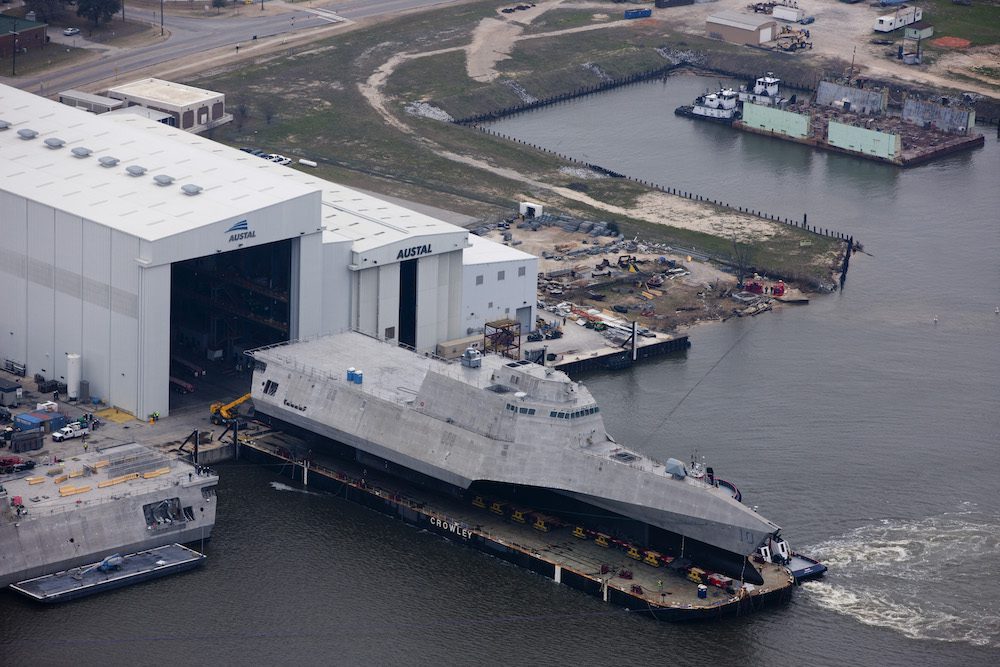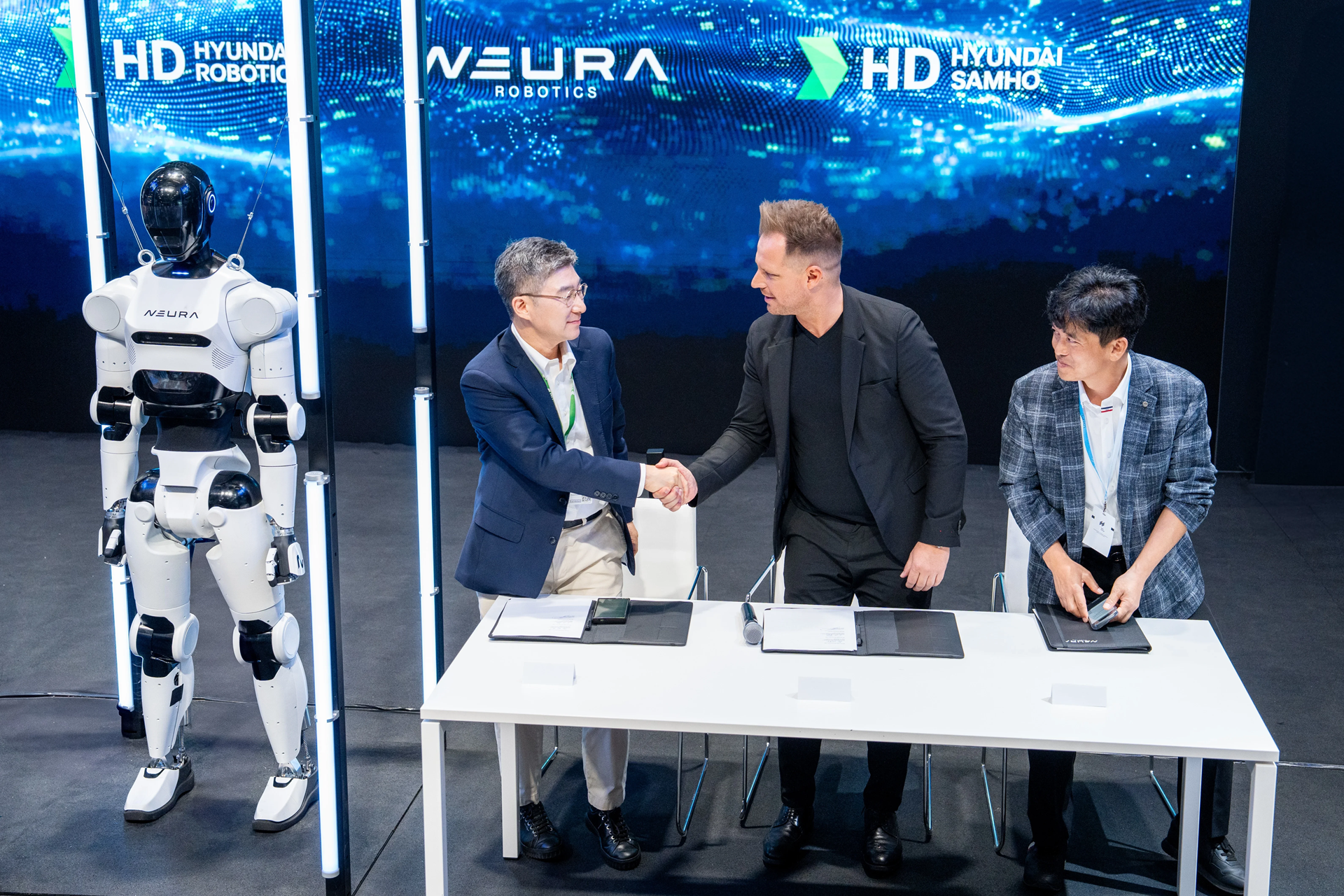by John Konrad (gCaptain) South Korean conglomerate Hanwha, valued at $42 billion, is considering a strategic acquisition of Austal, a pivotal player in the global shipbuilding industry, according to the Financial Review. Hanwha, keen to enhance its recent expansion into shipbuilding following the acquisition and renaming of Daewoo Shipbuilding to Hanwha Ocean, is particularly interested in Austal’s US operations.
Hanwha, a publicly-traded Korean conglomerate, has made significant strides in the shipbuilding sector this year. In a strategic move this May, it acquired a controlling stake of 49.3% in Daewoo Shipbuilding & Marine Engineering, one of South Korea’s top three shipbuilders, for an investment of $1.49 billion. Following the acquisition, Daewoo Shipbuilding underwent a rebranding, emerging under the new name of Hanwha Ocean.
Austal, an Australian company with shipyards in Western Australia and Alabama, USA, presents a compelling investment opportunity. Its anticipated contract for surveillance ship construction, valued at $3.2 billion, and its paltry market capitalization (under $1 billion) compared to other defense industry companies, make it an attractive prospect for investors. The intensifying competition with China has led to the US Navy’s desire to expand its shipbuilding efforts, further augmenting Austal’s appeal. Additionally, Austal USA’s recent strategic investment in enhancing its manufacturing capabilities by adding steel production lines to its existing aluminum manufacturing further bolsters its value proposition in the sector.
However, Austal’s US operations have recently grappled with substantial challenges. Following an extended investigation, the Department of Justice and the Securities and Exchange Commission (SEC) charged three of its maritime executives with accounting fraud. These allegations sent shockwaves through the industry.
Austal, recognized as the builder of the Independence Class Littoral Combat Ship (LCS) – which have faced harsh criticism for failing to meet expectations – is implicated in systemic accounting fraud allegations. Among those charged by the Securities and Exchange Commission is Austal USA’s former Chief Executive, Craig Perciavalle. These legal actions, coupled with an unsettling insight into the daily operations at Austal’s US shipyard, could hamper its capacity to attract critical executive hires and secure future financing.
Amid these turbulent times, Hanwha’s interest in Austal surfaces when the latter is on the cusp of significant defense contracts, thanks to the AUKUS pact. This agreement commits Australia to a massive $368 billion investment over the next three decades for the procurement of eight nuclear-powered submarines. Austal does not build submarines directly but has contracts to provide production work on the US Navy’s Virginia-class and future Columbia-class nuclear-powered submarine for General Dynamics’ Electric Boat.
The Financial Review also points out that this potential move has sparked interest among other financial behemoths. New York-based JF Lehman & Company, enjoying the backing of Morgan Stanley, is preparing to lodge a bid. Cerberus Capital Management and Washington’s Arlington Capital Partners are also interested.
Should Hanwha proceed with the acquisition, it could signal a remarkable shift in the US shipbuilding industry. This could usher in greater collaboration with Korean shipbuilders who, despite losing market share to China, still reign supreme in efficiently constructing large, highly complex ships. According to several experts interviewed by gCaptain, a symbiotic partnership combining Korea’s commercial shipbuilding efficiencies with American warship funding and expertise could revitalise Naval shipbuilding, as long as it can circumvent US government red tape.
Industry Consolidation
Austal USA’s strategic location holds one more significant appeal to private equity firms. Its close proximity to the newly revitalized Alabama Shipyards could offer potential investors a significant advantage in the shipbuilding industry. Merging the operations of the two yards would provide a combined capability to construct steel and aluminum ships and would also facilitate the much-needed upgrade and repair services for the US Navy’s aging fleet. Given Alabama Shipyards’ remarkable turnaround story — from having less than a dozen employees in 2018 to a workforce of around 250 with the ability to surge to 600 as needed — the company offers not only an ample supply of skilled labor but also the capacity to undertake substantial projects. Its extensive waterfront real estate and deep-water access further bolster its potential.
Also Read: Alabama Shipyard: On the Mobile waterfront, a sleeping giant has awakened
By strategically capitalizing on these existing opportunities, and other promising prospects in the commercial sector — such as supplying the burgeoning workboat market through the construction of aluminum vessels, or acquiring a primary provider of Jones Act tankers to the US Navy, Overseas Shipping Group (currently undervalued with a paltry market-cap of just $322 million, which is at or below the replacement cost of a single Jones Act crude tanker) and launching a newbuild project — savvy private equity investors could forge a robust shipbuilding conglomerate that meets several of the Pentagon’s most presssing needs. This well-positioned entity would be capable of effectively addressing the rising demand in both the defense and commercial sectors.
Conclusion
The potential acquisition of Austal by Hanwha could be a transformative event in the shipbuilding industry. Despite Austal’s current challenges, its significant growth potential, marked by robust U.S. Navy and Australian submarine contracts, make it an appealing prospect. Hanwha’s acquisition could not only solidify its position in the U.S. shipbuilding sector but also ignite greater collaboration between South Korean shipbuilders – which have been loosing market share to China – and American shipbuilders – which would benefit from the technologies and processes that make Korean yards among the world’s most profitable and efficient.
Yet, the intricacies of the political, legal, and competitive environment cast a shroud of uncertainty over the outcome. This potential acquisition highlights the volatile interplay between international business and defense strategy, underscoring the challenging reality faced by the U.S. Navy. Like VT Halter before it – which also had billions in contracts and invested hundreds of millions in expansion yet sold for an astonishing low $15 million – Austal is confronted with the stark truth that new facilities, substantial U.S. Navy contracts and promising opportunities do not guarantee financial security.

 Join The Club
Join The Club











